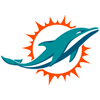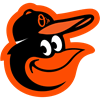Last week, I hypothesized that the July 15 extension deadline for franchise-tagged players would spark some ADP shifts, even though most of the accompanying news shouldn't really matter for fantasy value in the upcoming season. One person might tell you that Dak Prescott will be more motivated when he still needs to earn his long-term deal, but in the event he had gotten that contract, someone else would've been just as eager to explain how the QB's desire to live up to the payday would motivate a career-best season.
Perhaps fantasy drafters are getting smarter about discerning what matters and what doesn't, as the past week didn't bring any noteworthy ADP shifts for the four skill-position guys involved in franchise-tag shenanigans — Prescott, Derrick Henry, Hunter Henry and A.J. Green. Then again, last week's edition of ADP Analysis showed how a big contract and big headlines pushed Patrick Mahomes up by a few spots.
Given that recent NFL news has been all about the pandemic and the related challenges, there isn't much point analyzing ADP trends over the past week. In fact, I initially gave it a go, only to realize that nothing of substance had changed. Instead of forcing something where there's nothing, let's take a look at long-term trends, making note of some of the big differences between May/June ADP and July ADP (all data from BB10s):
Quarterbacks
QB18, ADP 145.3 ➡ QB20, ADP 150.1
At no point this offseason have I thought of Tannehill as being one of "my guys", but my updated QB rankings put him at No. 17, and he's now tied for my fourth-most-rostered QB (17 percent) on Drafters.com where I've been playing a lot of best ball. I'd kinda figured the field would be higher on Tannehill, one of eight quarterbacks to top 20 fantasy points per start last year.
He did it with some unsustainable efficiency numbers — namely 9.6 YPA (1st) and a 7.7 TD rate (2nd) — but there's a good chance some of his negative regression in 2020 will be partially offset by an increase in passing volume. Tannehill's average of 27.0 throws per start was comically low for the modern NFL, even within the context of a team that had Derrick Henry churning out yards in bunches.
The bad news is that Tannehill and Henry probably won't break off quite as many big plays this year. The good news is that they should have more snaps to work with, after the Titans finished last season tied for last in plays per drive (5.2) and third-to-last in overall volume (949 plays). If the team lands closer to 1,000 snaps, it shouldn't be too hard for Tannehill to get 500 pass attempts without threatening Henry's 300-plus carries.
QB29, ADP 223.9 ➡ QB18, ADP 145.0
I'm surprised Newton is still going this late. He moved up to QB16 (ADP 138.6) during a five-day stretch July 4-8, but he's back down to QB18 (ADP 144.1) over the past week, mirroring his position for the month of July as a whole. However, my personal experience on Drafters has been that he's not usually available this late. I guess that's not the case on BB10s, the site that offers the best ADP data and apparently the best price on Newton.
I'll also note that Newton's post-signing rise is partially responsible for Tannehill dropping two spots, as there hasn't been any tangible news that would have a major impact on 2020 expectations for the Titans QB. In any case, I love the value on all three guys in the QB 18-20 range right now — Newton, Joe Burrow and Tannehill. Each of the three offers rushing potential, whereas QBs 15-17 (Baker Mayfield, Jared Goff, Ben Roethlisberger) will be fully reliant on passing stats.
QB23, ADP 168.4 ➡ QB25, ADP 174.1
A wise man once told me I wouldn't win many best ball leagues by drafting a 38-year-old quarterback who has never reached 30 fantasy points or 25 rushing yards in a game. Regardless of whether he's washed up or not, Rivers isn't likely to do anything exciting for fantasy managers. Teddy Bridgewater is going at QB26 and actually comes with some upside in terms of both passing volume and rushing stats.
Other Movers
↓ Kirk Cousins  QB20, ADP 156.6 ➡ QB22, ADP 162.4
QB20, ADP 156.6 ➡ QB22, ADP 162.4
↓ Tua Tagovailoa  QB28, ADP 223.5 ➡ QB30, ADP 230.3
QB28, ADP 223.5 ➡ QB30, ADP 230.3
Running Backs
RB21, ADP 38.4 ➡ RB19, ADP 35.7
Conner still tends to come off the board in the general vicinity of the 3/4 turn (for 12-team leagues), but he's crept up ahead of fellow veterans Chris Carson and Le'Veon Bell. Part of that is drafters finally coming to their senses on Conner, and part of it may involve concern about Carlos Hyde and Frank Gore stealing carries on the Seahawks and Jets. Whatever the case, I have Conner ranked at RB14, as injuries have been the only thing to slow him down since Bell was removed from the Pittsburgh picture.
Remember that Conner's 2019 production — 14.8 PPR points per game — includes two games where injuries forced him out in the first half. He averaged 17.7 points in his other eight appearances, consistently drawing targets even when Jaylen Samuels was also getting some playing time.
RB22, ADP 41.1 ➡ RB23, ADP 48.3
Maybe I was a fool for taking Singletary as a third-rounder back in February or March, but I'd be just as much of a fool to pass him up in the fifth round in July and August. I've already spent enough time beating this drum, so let's just agree it's a good thing that I have Singletary in 37 percent of my Drafters leagues, and then we can move on to the rest of the article.
Devin Singletary forced 0.25 missed tackles per attempt, good for ✌ in the NFL #BILLS #BillsMafia pic.twitter.com/8Jbcl9ZYTu
— PFF BUF Bills (@PFF_Bills) July 24, 2020
RB29, ADP 57.4 ➡ RB31, ADP 63.5
It's reasonable to be excited about what Dobbins can do in Greg Roman's offense. It's not reasonable to assume Mark Ingram will disappear because his team has a shiny new toy. In addition to averaging 5.0 yards per carry and scoring 15 touchdowns in 15 games, Ingram finished last season with an 89.7 percent catch rate, 8.5 YPT and PFF's No. 4 pass-blocking grade among qualified running backs.
Ingram will never be Christian McCaffrey or Alvin Kamara, but that doesn't mean a rookie will be an instant upgrade on passing downs. Visions of Dobbins in a dynamic, exciting role should eventually come to fruition, but the more likely scenario for 2020 is a beefier approximation of Gus Edwards' role (133 carries, 7 targets) from last year. Fantasy drafters increasingly seem to share this concern, and there may be some general skepticism of rookies in a world with no offseason programs or preseason games.
RB35, ADP 83.8 ➡ RB33, ADP 80.1
Cam Newton isn't the most accurate quarterback, but we at least know he's competent, whereas Jarrett Stidham is a total mystery. White finished as RB7 and RB18 for PPR scoring the past two years, with snap shares of 54 and 46 percent putting him near the top of the league among so-called passing-down specialists. An offense built around Newton could place more emphasis on the running game and leave fewer snaps for White, whose ADP, fortunately, does leave some room for decline. Third-year backs Ronald Jones and Derrius Guice are the 'ceiling' plays in this ADP range, but White is the safest bet to be a useful contributor.
RB40, ADP 95.2 ➡ RB36, ADP 88.2
Best-ball drafters don't really seem to like pass-catching specialists, which makes sense if we're talking about a 10,000-team, best-ball tournament where victory requires hitting multiple home runs in the middle and late rounds. It makes less sense if we're discussing a standard 12-team league where you can finish in first place by hitting a bunch of singles and doubles. Ceiling still matters more than floor after the early rounds, but the gap between the two considerations isn't so wide.
Speaking of gaps, the disparity between Cohen's 2018 and 2019 production largely was driven by a violent drop from 10.2 yards per catch to 5.8. The first number is way about positional norms and was never likely to be repeated, but nobody could've guessed Cohen would drop so low. Expect him to split the difference in 2020, potentially land around 75 catches for 600 yards if his volume from the past two seasons holds up (91 targets in 2018, 104 in 2019).
RB42, ADP 98.4 ➡ RB38, ADP 92.8
It would be logical to make the assumption — just as I did — that this ADP shift is all about Raheem Mostert's trade request, something that first became public knowledge July 8. A closer looks tells a different story, with Coleman sitting at RB 39, ADP 94.5 from July 1-7. In other words, he was gaining some momentum before the Mostert news. I discussed the Mostert/Coleman situation in last week's edition of ADP Analysis, so I'll spare you the repetition this week. (The short version is that I'm taking the discount on Mostert... buy the dip... always buy the dip!).
CNBC producers are going through their rolodex to find guests they can call on the phone that are still recommending to buy the dip
— StockCats (@StockCats) March 16, 2020
Other Movers
↓ Sony Michel  — RB38, ADP 90.2 ➡ RB42, ADP 97.8
— RB38, ADP 90.2 ➡ RB42, ADP 97.8
↓ Phillip Lindsay  — RB39, ADP 92.4 ➡ RB41, ADP 97.0
— RB39, ADP 92.4 ➡ RB41, ADP 97.0
↑ Zack Moss  — RB47, ADP117.8 ➡ RB45, ADP 108.6
— RB47, ADP117.8 ➡ RB45, ADP 108.6
↓ Darrell Henderson  — RB46, ADP 115.7 ➡ RB48, ADP 124.4
— RB46, ADP 115.7 ➡ RB48, ADP 124.4
































